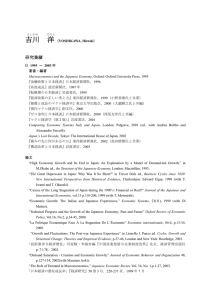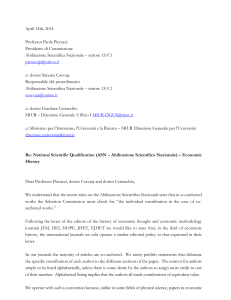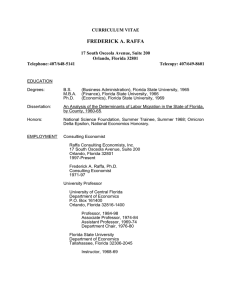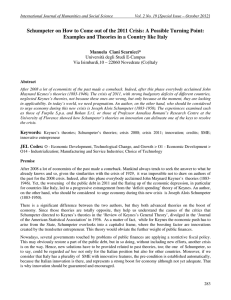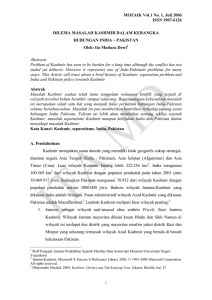Politics of India
advertisement
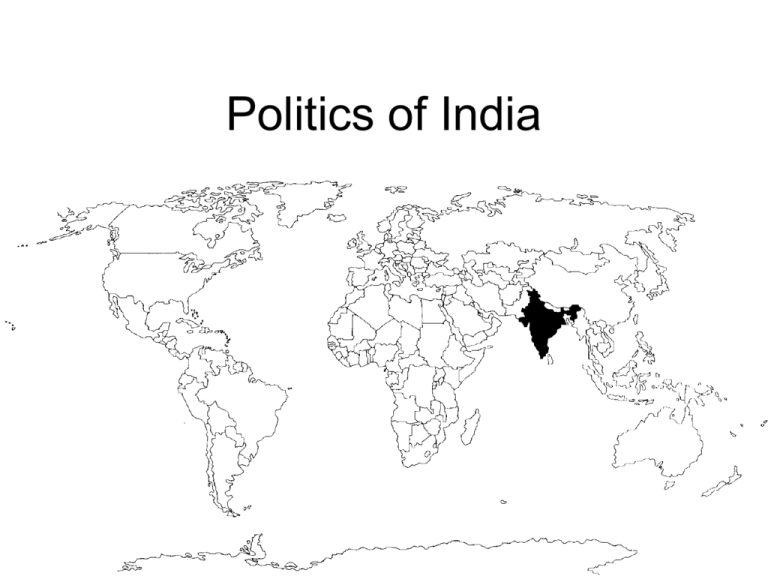
Politics of India India 2nd most populous nation • Population: over one billion • Growing at 1.4% a year ,D ng o Co em oc pu bl ic Re Ir a ai la Th n Ita ly nd of th e Un Fr ite an d Ki ce ng do m ic ra t a In di ea a n Un Un io ite n d St at e In do s ne sia Br a Pa zil k Ba ista ng n la de sh Ru ss ia Ni ge ria Ja pa n M ex Ph ic ilip o pi ne s Vi et na m G er m an y Eg y Et pt hi op ia Tu rk ey Eu ro p Ch in Population (July 2005 estimate) 1,400,000,000 1,200,000,000 1,000,000,000 800,000,000 600,000,000 400,000,000 200,000,000 0 A nation of diversity: languages • Constitution lists 14 official “principal languages” • English • Hindi (30%) A nation of diversity: religions • Religions: – Hindu (~80%) – Muslim (~13%) – others (e.g. Buddhist 0.7%) • all major religions in the world are present • one of the major causes of conflict • religion can become a political vehicle for social movement Brief history • One of the world’s oldest civilizations – 5,000 years • foreign incursions – Aryans, Arabs, Turks, Portugal, France, and Britain – from 1,500 B.C. to 19th Century A.D. 190 years of British colonial rule • Informal colonial rule through the British East India Company (1750s-1850s) • formal colonial rule after the Mutiny rebellion of 1857 British colonial rule • economic impact – trade structure • colonial institutions – state structure Struggle for independence • Indian National Congress was formed in 1885 • non-violent resistance to colonial rule • Mohandas Gandhi (1869-1948) – transformed INC – unity within diversity – non-cooperation movement • Nehru (1889-1964) Independence & partition • Division of the subcontinent (1947) – India – Pakistan Independence & partition • East Pakistan became Bangladesh in 1971 Republic of India • Prime Minister Nehru (1947-1964) • His daughter (Indira Gandhi) as Prime Minister (1966-1977, 1980-1984) Nehru’s legacies • His grandson – Rajiv Gandhi – Prime Minister (1984-1989) • His granddaughter-in-law – Sonja Gandhi – Congress party president (1999 - ) World’s largest democracy • Resilient democratic institutions, processes, and legitimacy – except 1975-1977 – Indira Gandhi declared national emergency • politics in India is characterized by – governments of precarious coalitions – weakened political institutions – political activism along ethnic lines Turnout % in General Elections 70 60 50 40 30 20 10 0 1952 1957 1962 Male 1967 1971 1977 1980 1984 Female 1989 1991 1996 1998 Total 1999 Economic development • Under Prime Minister Nehru’s rule – private property and government guidance – powerful planning commission – government rules and regulations • opportunities and incentives for corruption – self-sufficiency • domestic sector was protected from foreign competition • protected industries became inefficient Economic development • The “green revolution” in agriculture – new agricultural strategy in late 1960s – seeds, fertilizer, and irrigation – India became self-sufficient in food Economic development • state-led economic development – government-planned private economy – substantial industrial base Economic liberalization • Dissatisfaction with the relatively slow economic growth – dismantle controls over private sector – further integrate into global economy • Financial crisis in early 1990s – emergency funds from IMF & World Bank – conditional on economic liberalization • reduce government budget deficit • selling government shares in public enterprises Foreign direct investment 4000000000 3500000000 3000000000 2500000000 2000000000 1500000000 1000000000 500000000 19 70 19 71 19 72 19 73 19 74 19 75 19 76 19 77 19 78 19 79 19 80 19 81 19 82 19 83 19 84 19 85 19 86 19 87 19 88 19 89 19 90 19 91 19 92 19 93 19 94 19 95 19 96 19 97 19 98 19 99 0 -500000000 Bangladesh India Pakistan Economic liberalization • Economic performance – average growth rate of 6% since 1990 – reducing poverty by about 10 percentage points – purchasing power parity GDP: $2.66 trillion Annual Growth Rate of GDP 1961 - 1999 12 9 6 3 -3 -6 India Pakistan 99 19 97 19 95 19 93 19 91 19 89 19 87 19 85 19 83 19 81 19 79 19 77 19 75 19 73 19 71 19 69 19 67 19 65 19 63 19 19 61 0 Economic liberalization • India has large numbers of well-educated people skilled in the English language – India is a major exporter of software services and software workers Economic liberalization • Government has also been considering reducing workers’ legal protection • unions and workers’ resistance and strikes – oppose changes to labor laws and privatization Reduction of poverty • percentage of people living in poverty has been cut in half since 1947 • absolute number of poor people has been rising • very few welfare programs
